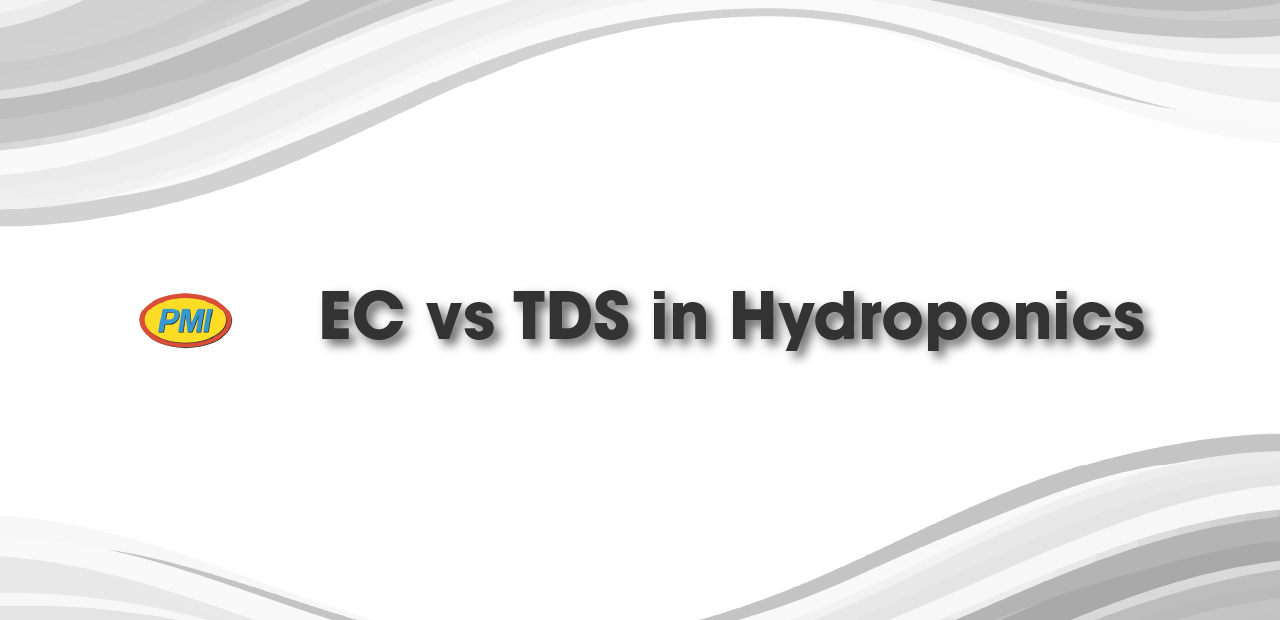Hydrophonics
EC vs TDS in Hydroponics
Enhancing Food Safety with TDS Meters
Hydroponics, the practice of growing plants in a soil-less medium, has gained immense popularity in recent years due to its efficient use of resources and ability to produce high-quality crops. One crucial aspect of hydroponics is maintaining the nutrient balance in the solution that nourishes the plants. Electrical conductivity (EC) and total dissolved solids (TDS) are two commonly used metrics to assess nutrient levels in hydroponic systems. In this article, we will explore the differences between EC and TDS measurements and delve into the role of TDS meters in ensuring food safety in hydroponics.
Understanding EC and TDS
Electrical conductivity (EC) is a measure of the ability of a solution to conduct electricity, which is directly related to the concentration of dissolved ions in the solution. EC is typically measured in units of millisiemens per centimeter (mS/cm) or micro siemens per centimeter (µS/cm). It provides a general indication of the total dissolved salts present in the solution, including both beneficial nutrients and potentially harmful substances.
Total dissolved solids (TDS), on the other hand, measure the concentration of all inorganic and organic substances present in a solution. It is often expressed in parts per million (ppm) or milligrams per liter (mg/L). TDS meters estimate the concentration by measuring the electrical conductivity of the solution and then converting it to TDS units using a conversion factor.
Distinguishing Between EC and TDS
While EC and TDS are related, it’s important to note that they are not interchangeable measurements. EC provides a measure of the solution’s conductivity, whereas TDS offers an estimation of the concentration of total dissolved solids. Since the TDS reading is obtained by converting the EC measurement, the conversion factor used can vary between different TDS meters and may not be standardized. Consequently, TDS values obtained from different meters may vary, but the EC measurement remains consistent.
Using TDS Meters for Food Safety
Food safety is a critical concern in hydroponic systems, where plants directly uptake nutrients from the nutrient solution. TDS meters play a vital role in ensuring the safety of crops by enabling growers to monitor and control nutrient levels effectively. Here’s how TDS meters enhance food safety in hydroponics:
Nutrient Management:
TDS meters allow growers to measure the concentration of dissolved solids in the solution accurately. By regularly monitoring the TDS levels, growers can ensure that the nutrient concentration remains within the desired range for optimal plant growth. This helps prevent over or under-feeding the plants, reducing the risk of nutrient deficiencies or toxicities.
Detecting Contaminants:
TDS meters can aid in identifying the presence of potentially harmful substances in the nutrient solution. High TDS readings that cannot be attributed to nutrient salts may indicate the presence of contaminants such as heavy metals, pesticides, or excess organic matter. Early detection of such contaminants enables growers to take prompt action, preventing their absorption by plants and the subsequent impact on food safety.
Water Quality Assessment:
TDS meters also help assess the quality of the water used in hydroponic systems. High TDS values in the source water may indicate the presence of dissolved minerals or pollutants that could affect plant health. Regular testing allows growers to identify potential issues and take appropriate steps to ensure the water used in the system is free from contaminants that could compromise food safety.
In hydroponics, maintaining the correct nutrient balance is crucial for plant growth and food safety. EC and TDS measurements provide valuable insights into the nutrient concentration and overall quality of the nutrient solution. While EC gives a general indication of conductivity, TDS meters convert this measurement into an estimation of total dissolved solids. By utilizing TDS meters, growers can effectively manage nutrient levels, detect contaminants, and assess water quality, thus enhancing food safety in hydroponics.
Regular monitoring of TDS levels ensures that plants receive an optimal nutrient concentration, minimizing the risk of deficiencies or toxicities. This not only promotes healthy plant growth but also enhances the nutritional value of the harvested crops. By avoiding over or under-feeding, growers can produce high-quality, safe, and nutritious food.
TDS meters also serve as an early warning system for potential contaminants in the nutrient solution. If TDS readings are unexpectedly high and cannot be attributed to nutrient salts, it may indicate the presence of harmful substances. Prompt detection of contaminants allows growers to take immediate action, preventing their absorption by plants and safeguarding the integrity of the final product.
Moreover, TDS meters assist in assessing the quality of the water used in hydroponic systems. By measuring TDS levels in the source water, growers can identify any dissolved minerals or pollutants that could affect plant health. This information enables them to make informed decisions regarding water treatment or alternative water sources, ensuring that the crops remain free from harmful substances.
In conclusion, TDS meters play a vital role in maintaining food safety in hydroponics. They enable growers to effectively manage nutrient levels, detect contaminants, and assess water quality. By utilizing TDS meters as a part of their regular monitoring routine, hydroponic growers can ensure the production of high-quality, safe, and nutritious crops, contributing to a sustainable and healthy food system.

